Air Operations, CBI 2 7th Heavy Bomb Group B-17s attack Rangoon, but they themselves are attacked by Japanese fighters. 1 of the B-17s is lost and the other heavily damaged.
[  | |   ] ]
Air Operations, Europe
BOMBER COMMAND
- 12 Bostons raid the Boulogne and Dunkirk docks with accurate bombing results. 1 Boston is lost.
- In minor operations, 20 aircraft raid Dieppe, 13 Blenheims to the Schiphol airfield and 2 aircraft make leaflet flights over France. There are no losses.
[  | |   ] ]
Aleutian Islands Japanese carrier-borne aircraft attack Dutch Harbor on Unalaska Island, damaging an American ship and hitting gasoline tanks. American reconnaissance aircraft and bombers search all day for the Japanese fleet but without success.
Japanese Air Strike on Dutch Harbor, Alaska
|
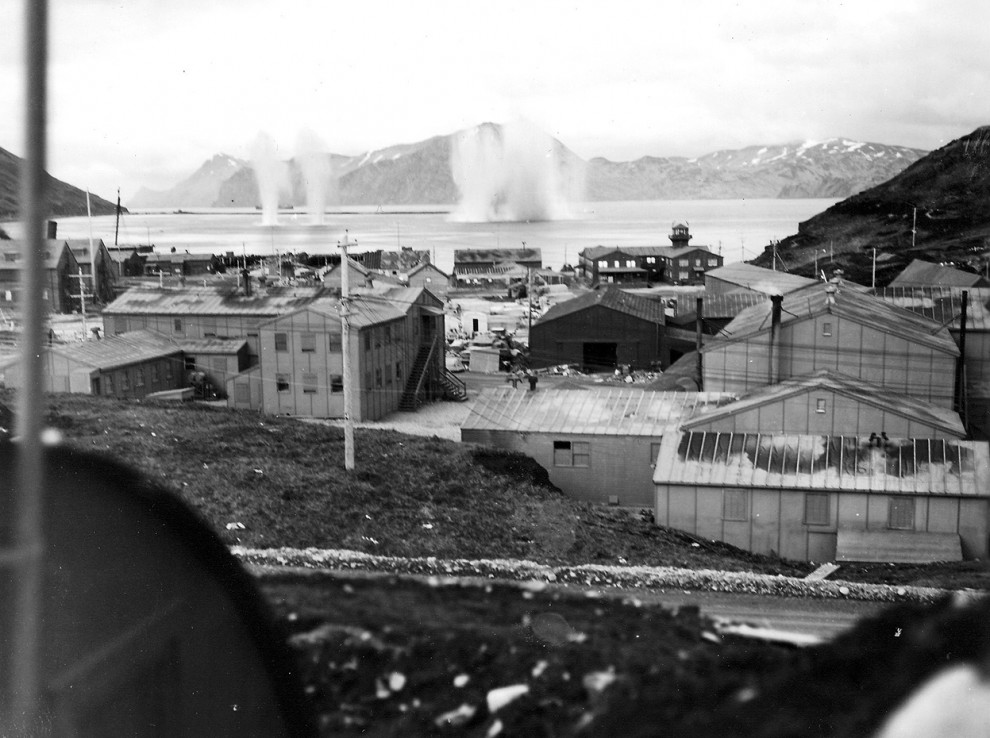 |
[ | |   ] ]
Axis Diplomacy Hitler visits Marshal Mannerheim in Finland to offer congratulations on the Finn's 75th birthday, and to strengthen the mutual relationships between Germany and Finland. The two men meet near the quiet Finnish border town of Imatra. The meeting is not a success: at one point Hitler demands that Finnish Jews be deported; Mannerheim answers, 'over my dead body'.
[  | |   ] ]
Caribbean The US freighter Velma Lykes (2572t) is torpedoed and sunk by U-158 south of the Yucatan Channel. The ship sinks so fast no lifeboats are launched. 15 of the ship's complement die in the attack.
[  | |   ] ]
North Africa The 8th Army counterattacks at nightfall to reduce the salient made by the Axis forces in the central sector of the British line. During the night the German 15th Panzer Div digs in at Bir el Harmat and repels the British attacks.
[  | |   ] ]
Occupied Czeshoslovakia Heydrich dies of the wounds he received in the attempt on his life on May 27. The German retaliate by ordering the execution of many Czech patriots held in prison. They also massacre all the male inhabitants of Lidice while the women and children are interned in a concentration camp.
Heydrich dies from septicemia - caused by foreign bodies - in Prague at the Bulov hospital. Himmler's first act after he has recovered from the shock of Heydrich's death is to locate the key to the safe in which Heydrich kept his 'personal' files.
Heydrich's coffin lay in state in the many courtyard of Hradcany Castle and the people of Prague filed by in resemblance of homage, some giving the Nazi salute.
[  | |   ] ]
Battle of Midway Believing that the Americans will not yet have left Hawaii, 14 Japanese submarines patrol between Midway and Hawaii. The Japanese operations around Midway begin according to plan with 108 aircraft from the carrier force being sent to attack the island. The American forces on the island detect the strike on the way in and send off one of their own.
The Japanese massacre the defending fighters but in their commander's view, fail to inflict sufficient damage on the island. He signals for a second strike to be prepared. The mixed bag of aircraft attacking the Japanese carriers are also roughly handled, losing 17 of 52 and scoring no hits.
The US carriers begin searching for Nagumo at dawn and the first strikes are launched around 0800. At 0700 the Japanese begin to rearm their reserve planes for a second attack on Midway but, reports of the American Fleet, vague at first, begin to arrive during the next hour and a quarter. When the presence of an enemy carrier is finally confirmed. Nagumo is presented with a terrible problem. His decks are cluttered with aircraft, torpedoes and bombs, his defending fighters need fuel, having just finished repelling the attack from Midway, and his first strike force is shortly due to return. He decides to recover all his aircraft first and then send a coordinated strike against the American ships.
At about 0930, the first American carrier planes come into action. The American strike is badly coordinated and at this stage only the 41 torpedo bombers attack. 35 are shot down and no hits achieved. They have managed, however, to lure almost all the Japanese Zeros down to low level and the tight cruising formation of the Japanese ships has been disrupted, weakening their AA defense. Just before 1030, when the Japanese have at last organized their strike, the American dive-bombers arrive, and within 5 minutes Akagi, Kaga and Soryu, their decks packed with aircraft ready to take off, have all been fatally hit. Hiryu is at this stage undamaged and launches strikes which find and critically damage the Yorktown (CV-5).
Late in the afternoon planes from Enterprise (CV-6) and Hornet (CV-8) inflict similar damage on the Hiryu. All 4 Japanese carriers sink or are scuttled within the next 24 hours.
Torpedo Bombers Ready to Launch from Enterprise
|
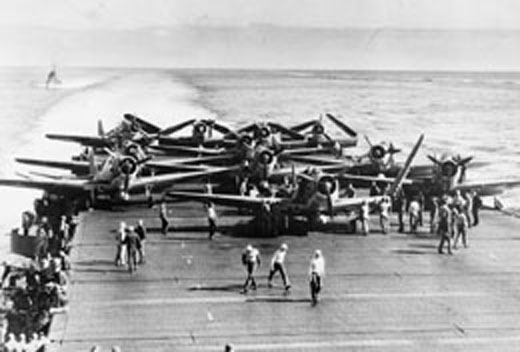 |
|
Grumman F4F-4 Fighter Takes Off from Yorktown
|
 |
|
Japanese Carrier Hiryu Maneuvers to Avoid Bombs
|
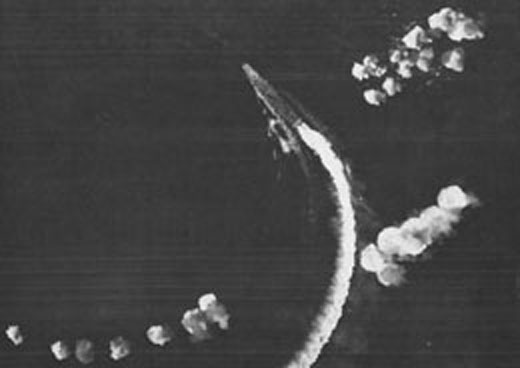 |
|
US Navy LCdr Maxwell F. Leslie Ditches in the Ocean
|
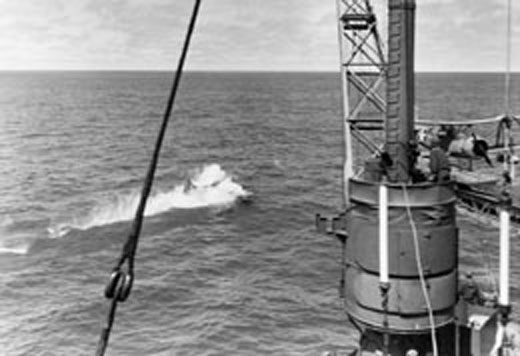 |
|
Oil Tank Burning from Japanese Air Raid on Midway
|
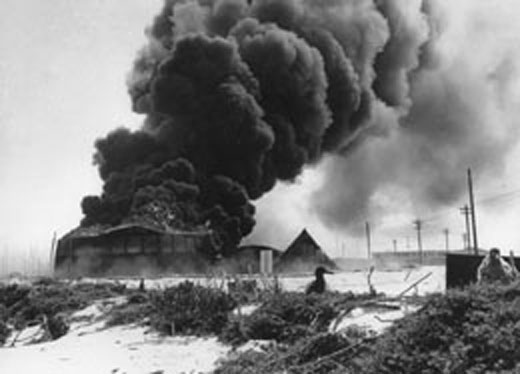 |
| M
A VB-8 SBD Lands Far Off Center Aboard Hornet
|
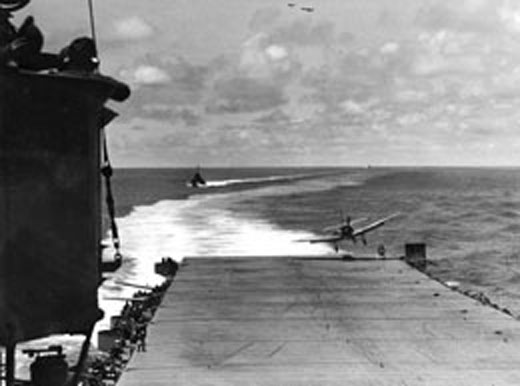 |
|
Japanese Attack Aircraft Amid Heavy Anti-Aircraft Fire
|
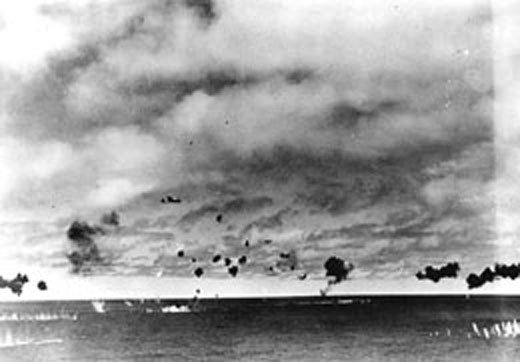 |
|
Smoke Rises from the Yorktown
|
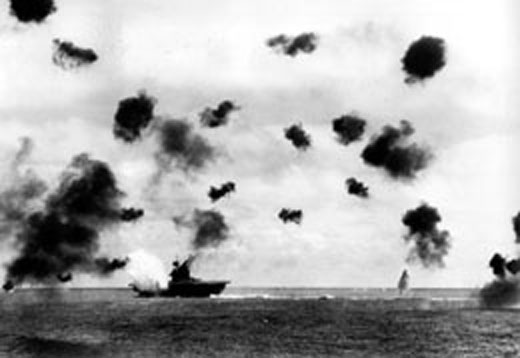 |
|
Black Smoke Pours from the Yorktown
|
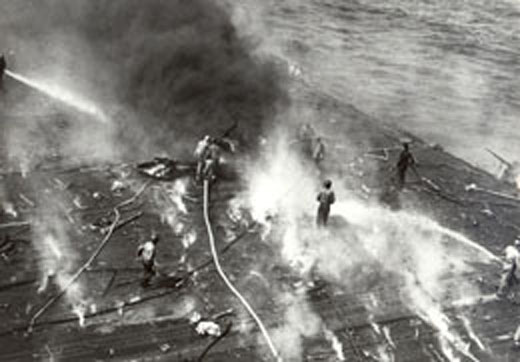 |
|
Aerial View of a Heavy Japanese Mogima Class Cruiser
|
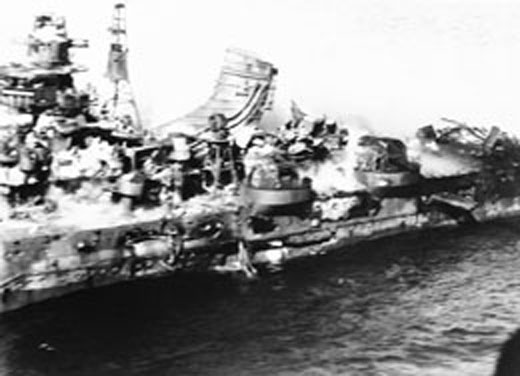 |
|
Yorktown Listing Heavily to Port
|
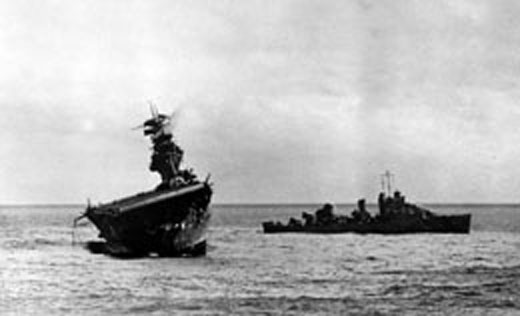 |
|
Abandoning the Yorktown
|
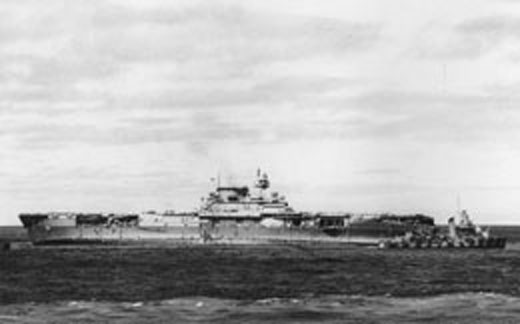 |
|
Sinking of the US Destroyer Hammann
|
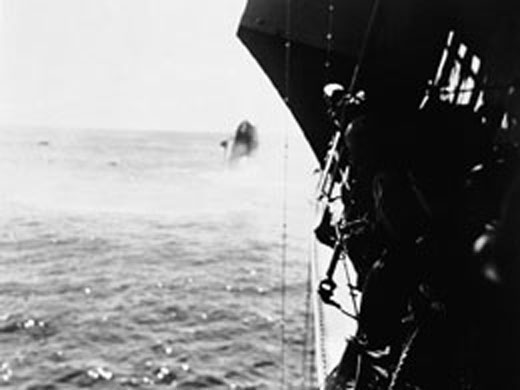 |
|
Navy Fighters During the Attack on the Japanese Fleet
|
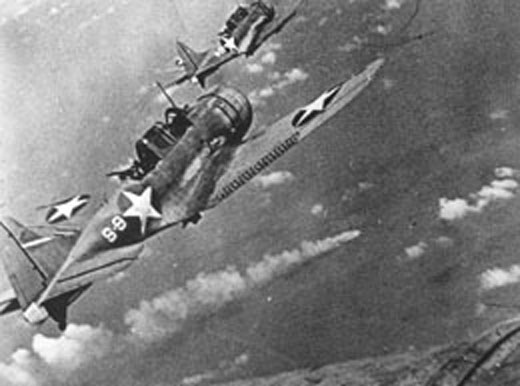 |
|
[  ] ]
|














